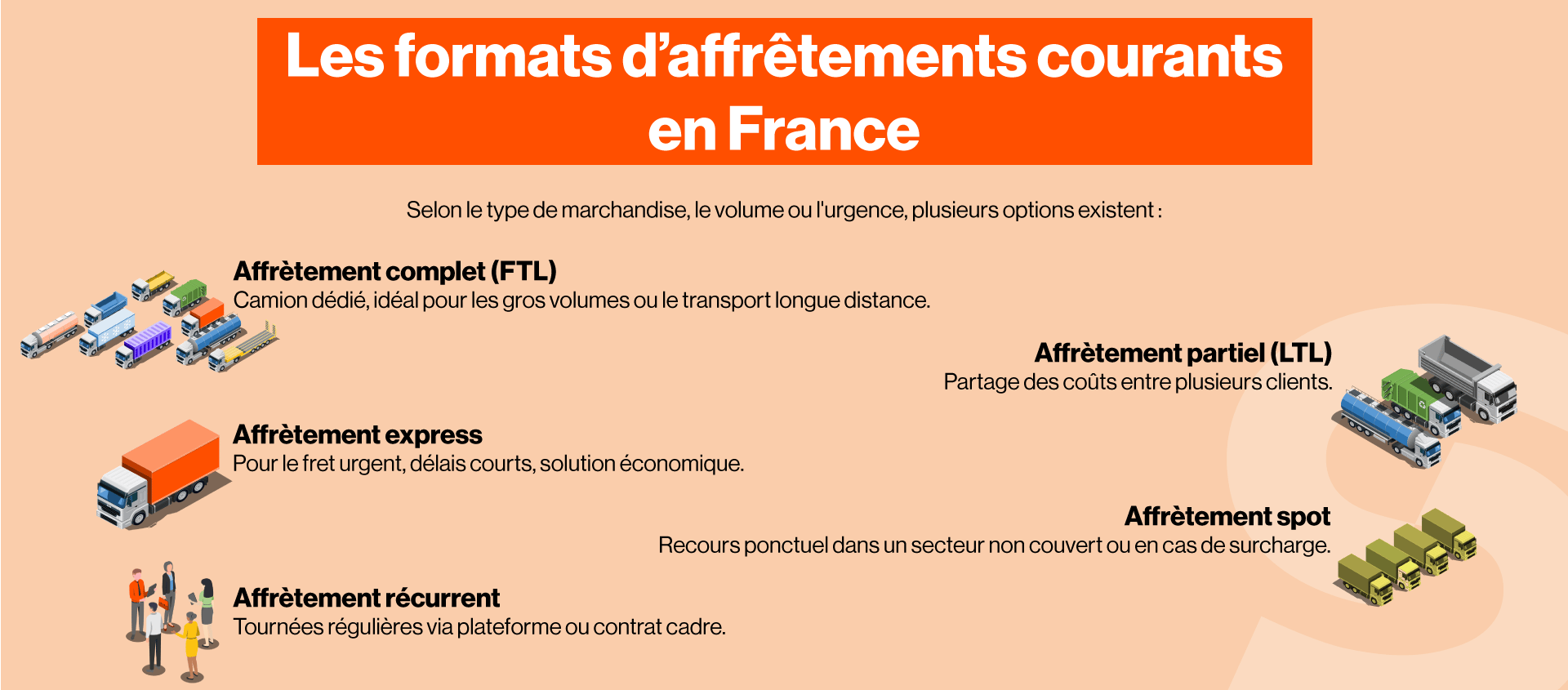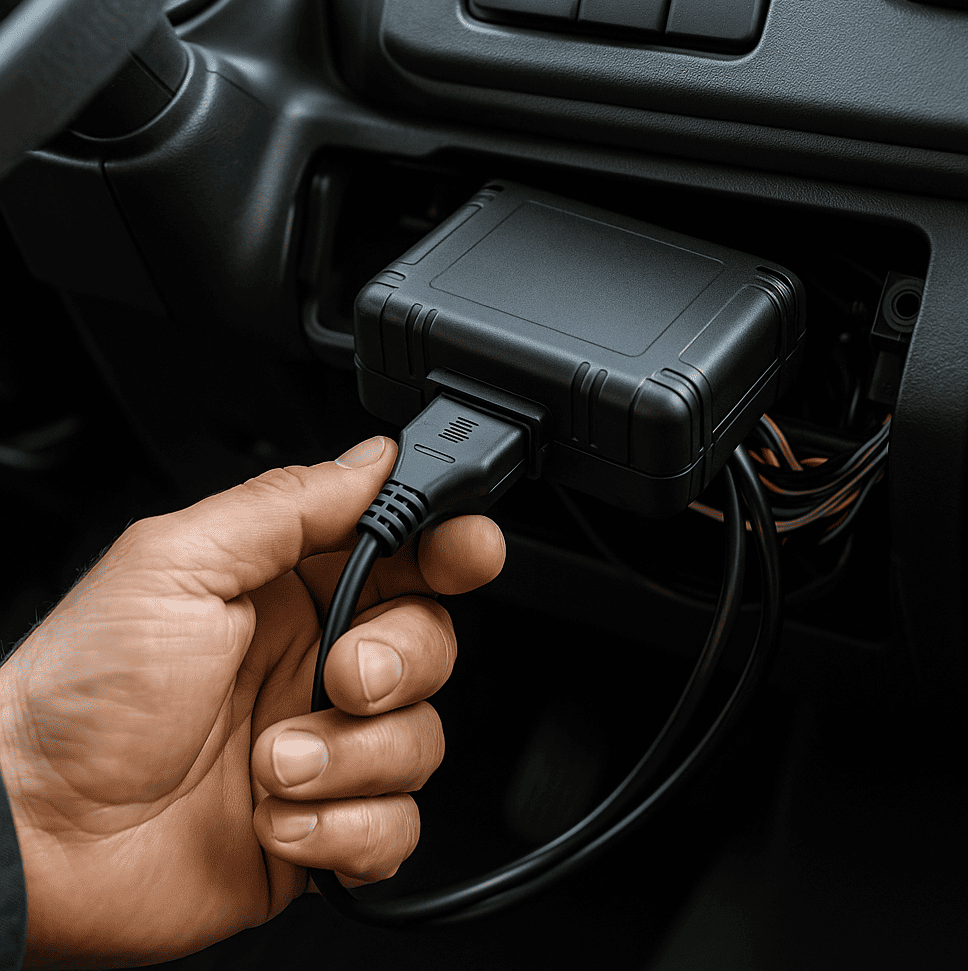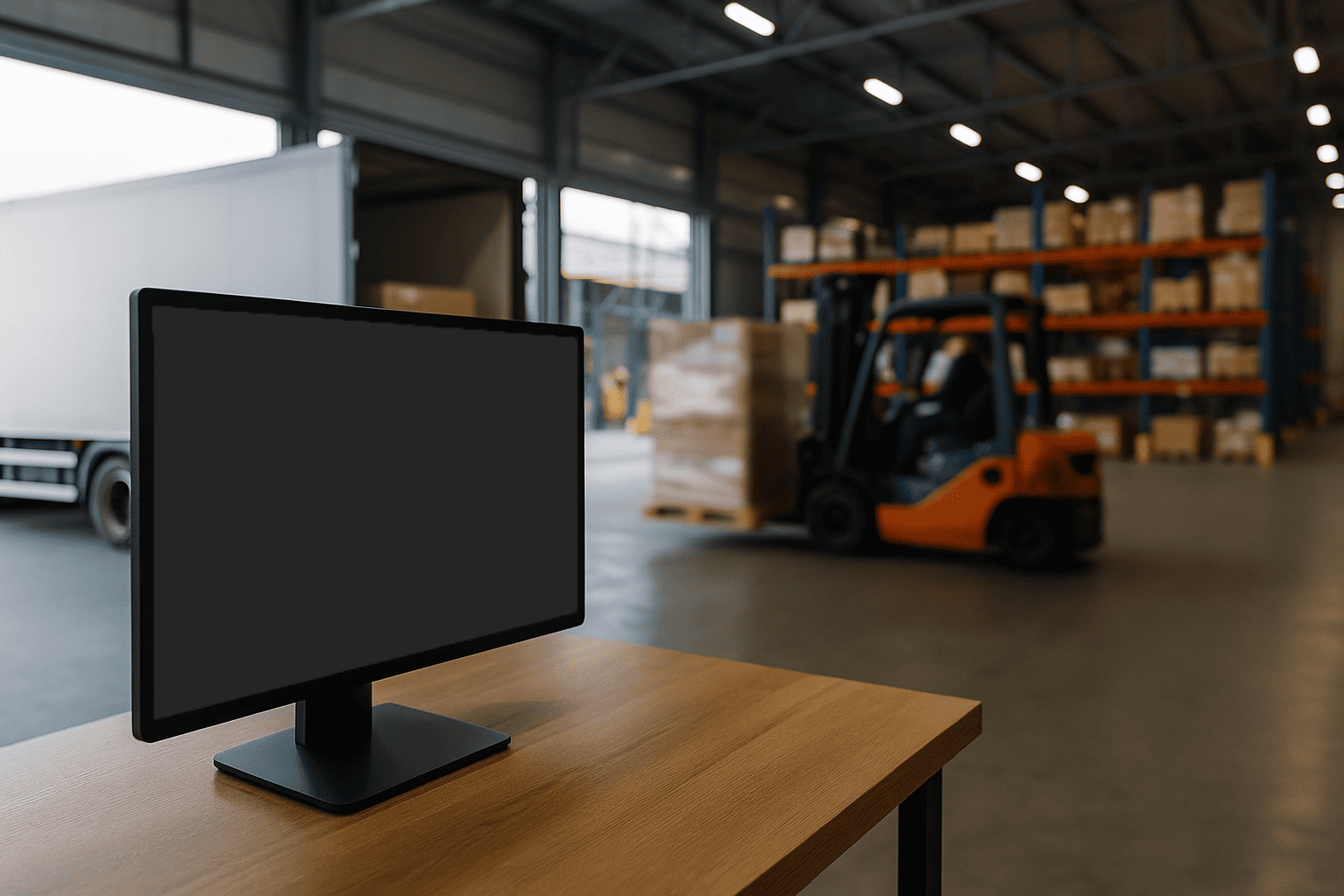Sommaire
Chartering is still too often seen as a plan B, a cost-effective transport solution activated as a last resort. However, in a freight transport sector under pressure, this view deserves to change.
Shortage of drivers, rising costs, increasingly irregular flows, ever finer customer demands, environmental pressure... There's no shortage of challenges. And in this context, one thing is clear: to continue transporting goods under the right conditions, you need to be able to adapt quickly, well and at the right price.
This is precisely where road chartering reveals all its potential. Well thought-out and well managed, it becomes a real lever for agility, with a significant reduction in costs while maintaining the best value for money. Thanks to digitalization, real-time monitoring further enhances performance.
In this article, we take a look at the advantages of chartering, the best practices for getting the most out of it, and how Sinari's digital solutions improve logistics management, with :
- more agile transport organization,
- more informed choice of carrier,
- and cost optimization.
Chartering advantages: what are we really talking about?
Chartering in the road haulage industry: simple but strategic
Road chartering involves entrusting all or part of a goods transport mission to a partner, rather than managing it with your own fleet. Behind this apparent simplicity lies a real chartering operation, based on two players:
- The charterer, who provides trucks, personnel and equipment.
- The charterer, who organizes the mission, manages the transport plan, and remains the customer's contact.
It's not just a question of competition: it's also a question of securing the loyalty of partners on certain routes, and finding solutions to meet exceptional customer needs that can't be met in-house (new routes, spot missions, etc.).
In practice, chartering is already part of everyday life: it is used to absorb a peak in activity, to compensate for a lack of equipment or to cover an unserved area. Long seen as an emergency solution, it is now becoming a genuine adaptation and optimization tool, integrated into the transport organization of the most agile companies.
Common charter formats in France

Why is chartering becoming a real strategic choice for carriers?
In an environment where constraints are mounting (driver shortages, rising costs, flow instability), carriers no longer have the luxury of improvisation. Gaining agility is now a necessity. And chartering clearly has a role to play.
Asset no. 1: immediate flexibility in the face of the unexpected
An unforeseen problem with a truck, a short delivery deadline or an area outside your fleet plan? Chartering allows you to respond seamlessly, by choosing the most suitable carrier at the right time. With the Sinari Network tool, chartering management simply becomes less administrative and more fluid, thanks to the reduction of paper and tracking tasks, without having to intervene in the search for subcontractors.
Cost reduction and optimization
By converting fixed costs into variable costs, chartering delivers immediate cost savings. No excessive investments or hidden costs: you pay for the service rendered, never for unused resources.
Ideal if :
- your volumes vary greatly from week to week,
- or if you prefer to limit heavy investment.
In short: you adapt your costs to your actual activity. And in a market as unpredictable as TRM, that's a real plus when it comes to preserving your margins.
Open up to new markets... without spreading yourself too thin
Do you need to transport specialized goods or serve a new area without investing in new capacity? Chartering gives you access to a qualified network without compromising your business model. It's also an excellent way to test a new route or a relationship with a partner before committing in-house resources to the new traffic, while benefiting from better value for money for one-off or international assignments.
What are the warning signs?
Here are a few concrete signs that it may be time to integrate (or reinforce) chartering into your business model:
-
your routes are not optimized, and certain "exotic" destinations generate too many parasitic kilometers,
-
you refuse missions outside your zone,
-
you can't absorb certain customer emergencies,
-
your fixed costs are too high in off-peak periods.
Charter or own fleet: why think in terms of a hybrid model?
For a long time, it was almost a choice of sides: clean fleet versus charter operation. Today, this opposition is no longer really relevant.
The reality on the ground is driving more and more carriers to build a mixed model, flexible and adjustable, capable of reconciling :
- cost control,
- quality of service,
- and operational responsiveness.

The beauty of the hybrid model lies in its ability to draw on :
- its own fleet to secure regular routes, strategic customers or sensitive flows ;
- a network of charterers to absorb peak periods, specific requests or peaks in activity.
Why this model is becoming essential
In the road transport industry, pressure is high on all fronts: tight schedules, unpredictable volumes, more demanding customers...
In this context, few companies can still do everything in-house without blowing up costs or compromising quality.
Faced with the complexity and risks of today's market, the hybrid model lets you :
- absorb peaks without disrupting your planning,
- choose a charterer according to your selection criteria: reputation, experience, zone,
- and guarantee continuity of service, even in unforeseen circumstances.
And with a solution like Sinari TMS, it's possible to manage all flows - own and charter - from a single interface, with the same KPIs, the same traceability, and a unified vision.
3 levers for a successful hybrid model

More than a logistics plan, a true state of mind
Adopting a hybrid model isn't just about combining resources. It's about changing your mindset: no longer trying to own everything, but to have rapid access to the right resources, and to manage them intelligently.
And that's precisely where the right tools, like those from Sinari, can make all the difference.
Digital chartering: amplified benefits for carriers
Managing freight transport with paper and e-mails is a waste of time. For truly efficient management, you need a high-performance TMS, especially if you want real-time tracking of all your missions.
➡️ This is where digitalization changes the game.
A TMS for methodical, efficient chartering
A TMS (Transport Management System) is like a transport command center. It enables you to :
- manage planning and carrier selection in just a few clicks.
-
Compare offers to optimize, compete and reduce costs.
- generate documents automatically (CMR, eCMR, delivery notes, etc.),
- track routes in real time,
- Analyze performance: punctuality, cost per km, CO₂ emissions, number of freight managed.
With Sinari TMS, the carrier retains control of all his flows, both owned and chartered, in a unified interface.webp?width=1920&height=1080&name=Template-6-blog%20(2).webp)
Better chartering isn't about chartering more: it's about chartering intelligently
Digitization doesn't replace business expertise - it enhances it. It enables the charterer or operator to gain in fluidity, anticipation and reliability, while structuring more durable and professional relationships with its partners.
And this is where Sinari's tools really come into their own: by bringing the same quality of management to chartering as they do to internal flows, they transform a one-off lever into a day-to-day strategic advantage.
Chartering, a real lever for agility... provided it's properly managed
In a tense transport environment, where everything moves fast - requests, hazards, customer demands - chartering is a real lever for agility.
Used properly, it can :
- absorb peaks in activity without disrupting the fleet,
- broaden your scope of action, without multiplying investments,
- and gain in flexibility, while maintaining a high level of service.
But to take full advantage of this, chartering can no longer be managed "by feel". It requires :
- a well-structured network of partners,
- clear, shared quality criteria,
- and, above all, the right tools to keep control of planning, monitoring and performance.
By combining the power of carrier networks with business tools designed specifically for them, chartering becomes much more than a Plan B: it becomes a genuine lever for sustainable performance, for all those involved in the field.



.webp)






